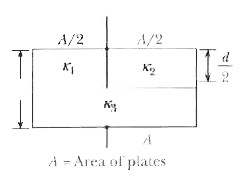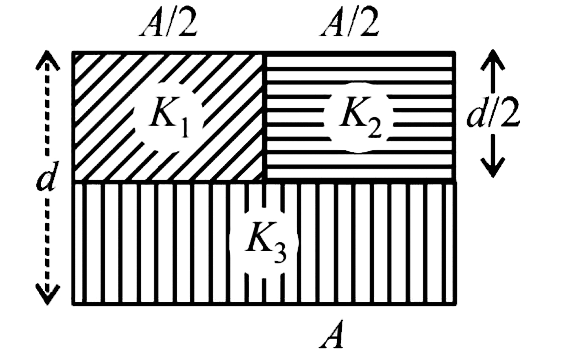(a) Define dielectric constant.
(b) How does dielectric constant affect SN1 rates ?
(c) Explain why solvolyses are much faster in EtOH than in acetone even though both solvents have the same dielectric constants.
(a) The dielectric constant determines the ability of a solvent to reduce the electrostatic attraction between the oppositiviely charged ions. With high D.C ., there is less ion pairing.
(b) SN1 reactions require the ionisation of a convalent bond which is favoured by solvent with high D.C
(c) In addition to its D.C ., the ability to form H-bonds with X makes EtOH the better SN1 solvent than acetone which cannot form H-bonds.
Topper's Solved these Questions
- ORGANIC REACTION MECHANISMBOOK - CENGAGE CHEMISTRYCHAPTER - ORGANIC REACTION MECHANISMEXERCISE - Subjective
19 Videos
- ORGANIC REACTION MECHANISMBOOK - CENGAGE CHEMISTRYCHAPTER - ORGANIC REACTION MECHANISMEXERCISE - Comprehension
36 Videos
- ORGANIC REACTION MECHANISMBOOK - CENGAGE CHEMISTRYCHAPTER - ORGANIC REACTION MECHANISMEXERCISE - Analytical and Descriptive
6 Videos
- NCERT BASED EXERCISEBOOK - CENGAGE CHEMISTRYCHAPTER - NCERT BASED EXERCISEEXERCISE - Chemical Equilibrium
72 Videos
- P-BLOCK GROUP 13 - BORON FAMILYBOOK - CENGAGE CHEMISTRYCHAPTER - P-BLOCK GROUP 13 - BORON FAMILYEXERCISE - Exercise Archives (Subjecive)
9 Videos
Similar Questions
The region of space between the plates of a parallel-plate capacitor is filled with a liquid dielectric with a dielectric constan ∈1. • A solid dielectric wi th a dielectric. constant ∈2 is immersed in the liquid. The lines of force in t.he liquid have the shape shown in the figure. Which of the two dielectric constants is greater?
View SolutionA parallel plate capacitor of area A, plate separation d and capacitance C is filled with three different dielectric materials having dielectric constant K1,K2 and K3 as shown in fig. If a single dielectric material is to be used to have the same effective capacitance as the above combination then its dielectric constant K is given by :
View Solution
Knowledge Check
A parallel plate capacitor of area A, plate separation d and capacitance C is filled with three different dielectric materials having dielectric constants k1k2andk3 as shown in the following figure. If a single dielectric material is to be used to have the same capacitance C in this capacitor then its dielectric constant k is given by
 A1k=1k1+1k2+12k3B1k=1k1+k2+12k3Ck=k1k2k1+k2+2k3Dk=k1k3k1+k3+k2k3k2+k1
A1k=1k1+1k2+12k3B1k=1k1+k2+12k3Ck=k1k2k1+k2+2k3Dk=k1k3k1+k3+k2k3k2+k1A parallel plate capacitor of area A, plate separation d and capacitance C is filled with three different dielectric materials having dielectric constants k1,k2 and k3 as shown. If a single dielectric naterial is to be used have the same capacitance C in this capacitor, then its dielectric constant k is given by
 A1k=1k2+1k2+12k3B1k=1k2+k2+12k3Ck=k1k2k1+k2+2k3Dk=k1+k2+2k3
A1k=1k2+1k2+12k3B1k=1k2+k2+12k3Ck=k1k2k1+k2+2k3Dk=k1+k2+2k3A parallel plate capacitor of area A, plate separation d and capacitance C is filled with three different dielectric materials having dielectric constants k1, k2 and k3 as shown. If a single dielectric material is to be used to have the same capacitance C in this capacitor, then its dielectic constant k is given by
 A(a) 1K=1K1+1K2+12K3B(b) 1K=1K1+K2+12K3C(c) K=K1K2K1+K2+2K3D(d) K=K1+K2+2K3
A(a) 1K=1K1+1K2+12K3B(b) 1K=1K1+K2+12K3C(c) K=K1K2K1+K2+2K3D(d) K=K1+K2+2K3
If half the space between two concentric conducting spheres be filled with dielectric of dielectric constant k and the rest is filled with air. Show that the capacitance of the capacitor thus formed will be same as if the whole part is filled with the dielectric of dielectric constant 12(1+k):
View SolutionThe space between the rectangular plates (with sides aandb) of a parallel-plato capacitor (the distance between the plates is l) is filled with a solid dielectric whose dielectric constant is c. The capacitor is charged to a certain potential difference and disconnected from the voltage source. After that the dielectric is slowly moved out of the capacitor, which lTIOanS that the section x not filled with the dielectric gradually increases in size. How wi ll the potential difference between the plates and the surface charge densities on both parts of the capacitor (with and without the dielectric) change in the process?
View SolutionThree plates A, B and C are placed close to each other with +Q charge given to the middle plate. The inner surfaces to A and C can be connected to earth through plate D and keys K1 and K2 . The plates D is a dielectric slab with dielectric constant K1 then the charge that will flow through plate D and keys K1 and K2 . The plate D is a dielectric slab with dielectric constant K, then the charge that will flow though plate D when K2 is closed and K2 is open is

View SolutionA parallel -plate capacitor of area A, plate separation d and capacitance C is filled with four dielectric materials having dielectric constant k1,k2,k3 and k4 as shown in the figure below. If a single dielectric materical is to be used to have the same capacitance C in this capacitor, then its dielectric constant k is given by

View SolutionPassage II
We have two parallel plate capacitors P and Q having same capacitance C0. P is connected to a battery of potential difference V and it remains connected to the battery even after the charging is over. Q is also connected to a battery of the same potential difference V but after the charging gets over, it is disconnected from the battery.
Answer the following questions:
If dielectric slab of dielectric constant 5 is inserted in between the paltes of Q so that the entire space is occupied by the dielectric and if U is the energy stored before the insertion of dielectric then stored energy after the dielectric slab is introduced is
View Solution
